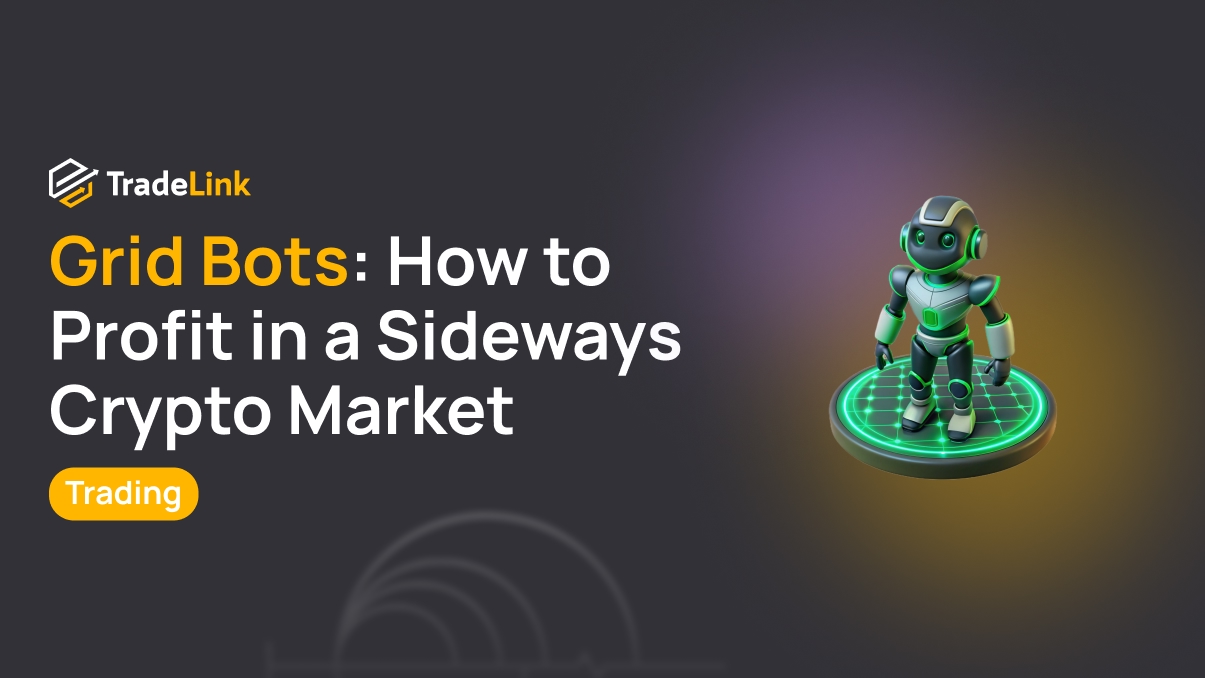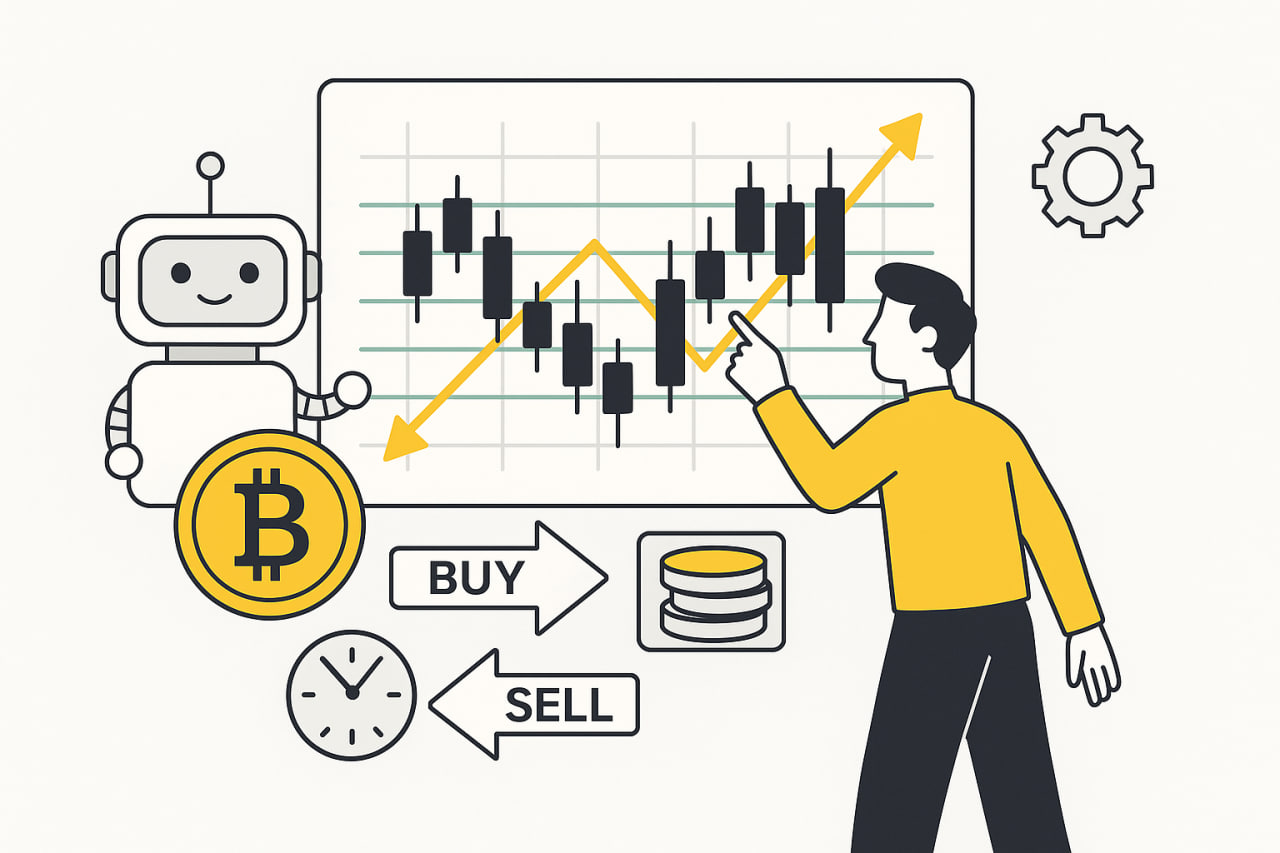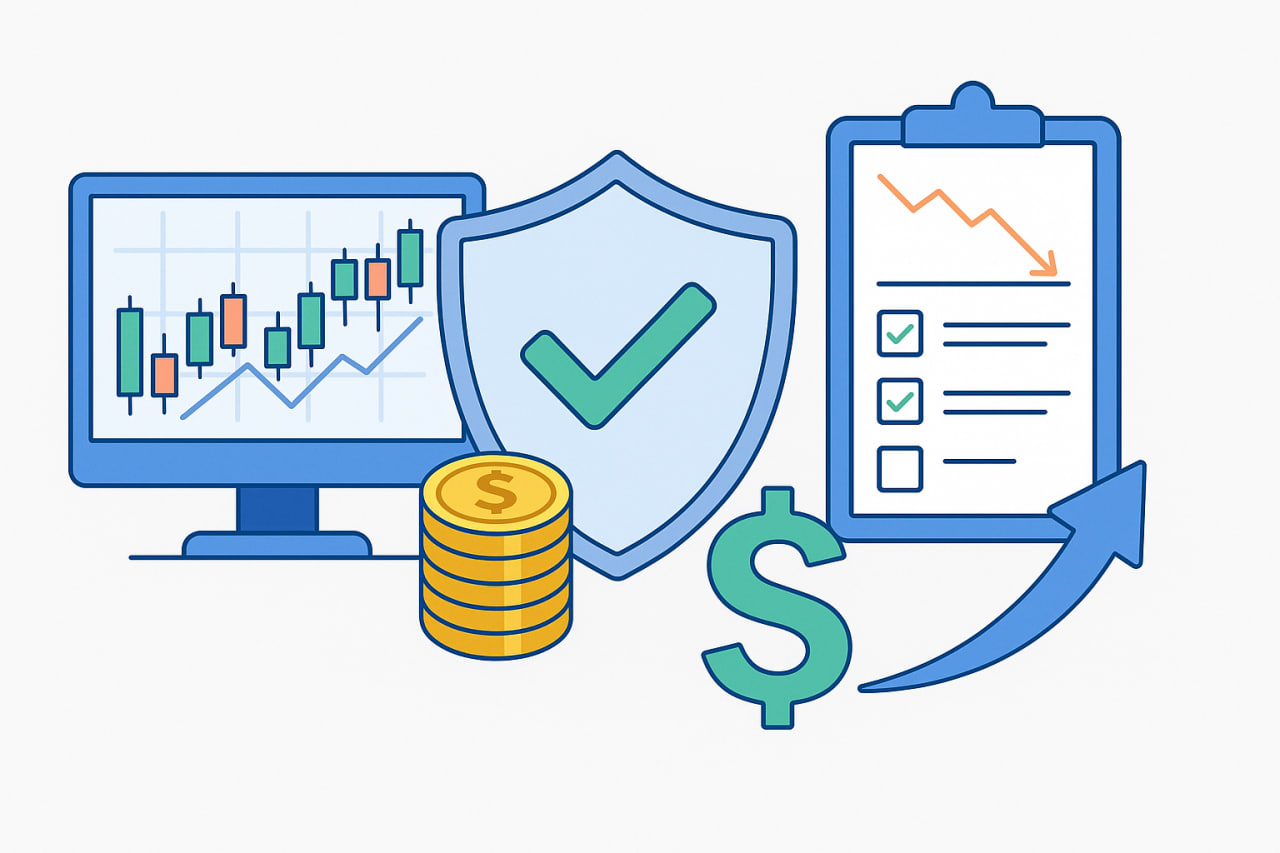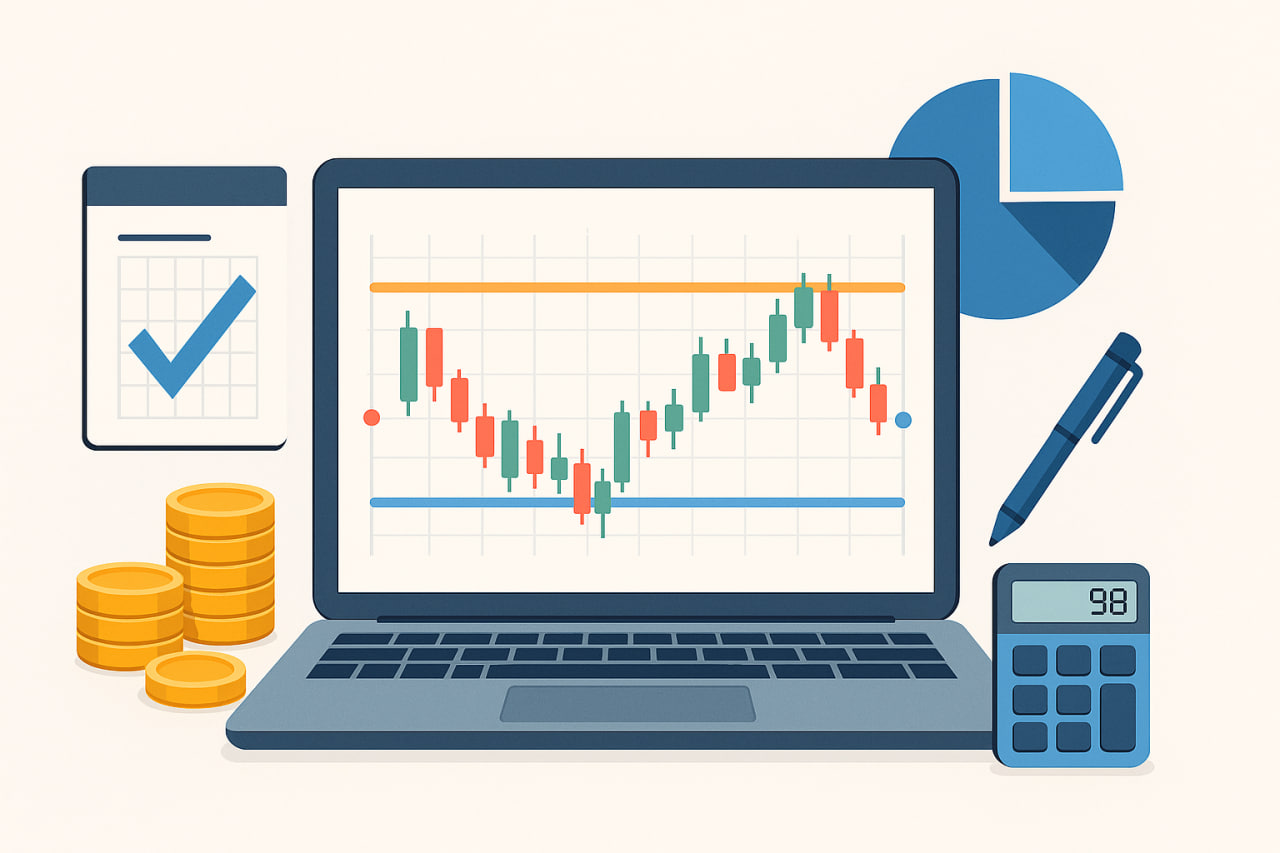Grid Bots: How to Profit in a Sideways Crypto Market

Contents
- Introduction
- What is a Grid Bot
- Advantages of Grid Bots
- Disadvantages and Risks
- How to Minimise Risks
- How to Choose a Grid Bot
- Popular Platforms
- Configuration for a Sideways Market
- Conclusion
Introduction
On cryptocurrency charts, one can often observe sideways price movement — the so-called flat market. During this period, an asset does not demonstrate sharp growth or decline but fluctuates within a limited range.
For many beginners, such a situation may seem unfavourable, since there is no clearly defined trend. However, in practice, this is not always the case. Experienced traders employ strategies that allow them to extract profits even in a sideways market. One of the popular tools for this purpose is the grid bot.
What is a Grid Bot

A grid bot (or grid trading bot) is a program that automates cryptocurrency trading. Its task is to place buy and sell orders based on a pre-defined grid of price levels.
For example, if Bitcoin fluctuates within the range of 30,000 to 32,000 dollars, the bot places buy orders closer to the lower boundary and sell orders above the current price. This way, trading continues even without the trader’s constant presence.
Many exchanges, including Binance, have integrated grid bot functionality directly into their terminals, making the strategy accessible to a broad audience.
How the Grid Strategy Works
The grid strategy is built on the principle of buying during a decline and selling during a rise within a predetermined range. The bot divides this range into several levels and places orders accordingly.
When the price approaches the lower boundary, the asset is bought; when it returns to the upper boundary, it is sold. As a result, the trader locks in profit on each movement cycle. This approach is particularly efficient during prolonged periods of price fluctuations. Therefore, grid trading is often used as a suitable strategy during periods of sideways markets.
Advantages of Grid Bots
Using grid bots offers traders several advantages:
-
24/7 trade automation — the bot operates continuously, ensuring trading activity even without human involvement.
-
Reduced emotional impact — decisions are made by the algorithm, minimising the risk of panic or impulsive entries.
-
Efficiency during “noise” fluctuations — the strategy makes it possible to capture profits from small movements that would be difficult to manage manually.
-
Transparent mechanics — the rules of operation are easy to explain to investors: range, number of levels, step size, and trade volume.
-
Suitable for different categories of traders:
-
For beginners, it helps to become familiar with trading without the need for constant chart monitoring.
-
For experienced traders, it serves as an additional tool to increase income and diversify strategies.
-
Disadvantages and Risks
The grid strategy also has its vulnerable aspects:
-
Commissions and spreads — a large number of trades increases expenses, especially on pairs with a wide spread.
-
Price breakout beyond the range — during a sharp impulse, positions may be left without counter-orders, leading to a drawdown.
-
Strong one-sided trend — the grid fills up against the movement, and the deposit is exposed to increased risk.
-
Insufficient deposit — a lack of funds prevents covering all levels, reducing the effectiveness of the strategy.
-
Incorrect parameters — too narrow a grid produces many low-profit trades, while too wide a grid practically blocks activity.
How to Minimise Risks

To reduce risks, it is essential to take several rules into account:
-
Choose the grid width correctly, based on current volatility.
-
Use exchanges with minimal fees (many platforms offer discounts for active traders).
-
Apply protective tools — stop-losses and loss limits to contain risk during sharp market changes.
-
Rely on strategies from traders with verified trading performance, where statistics are confirmed on-chain and profitability dynamics are visible. This approach enables the comparison of different methods, the selection of the most stable ones, and the adaptation of grid bot parameters to real market conditions.
How to Choose a Grid Bot
Before choosing a tool, it is essential to evaluate:
-
Exchange support — some bots work only with major platforms (Binance, Bybit), while others integrate with dozens of services;
-
Interface — the clearer the menu, the lower the likelihood of mistakes when configuring.
-
Parameter flexibility — the ability to adjust the range, step, trade volume, and use protective mechanisms;
-
Payment model — services may charge a subscription fee, a percentage of profit, or provide a free but limited set of functions.
Popular Platforms
-
Binance Grid Bot — one of the accessible options for beginners: built into the exchange interface, and allows you to test the strategy quickly.
-
Pionex — a platform focused on automated trading. It offers more than ten built-in bots, including grid bots, and does not charge a subscription fee.
-
Bitsgap — a service that connects to more than 25 exchanges. It offers flexible settings, analytics, and demo testing.
-
3Commas — a universal solution with support for multiple exchanges, a user-friendly interface, and a wide range of portfolio management tools.
Configuration for a Sideways Market

Before launching a grid bot, it is essential to set four basic parameters:
-
Grid width — determines the price range. A narrow grid ensures numerous trades with small profits, while a wide grid results in fewer but more significant trades.
-
Number of levels — the more levels, the more evenly the risk is distributed, but the higher the load on the deposit and commissions.
-
Trade volume and capital reserve — each step requires separate capital plus an additional reserve of 10–20%.
-
Price step — calculated as (upper boundary − lower boundary) / number of levels. It must cover commission and spread; otherwise, trades lose their meaning.
Approximate Guidelines
Market Situation | Recommended Grid Width | Number of Levels | Result |
Narrow sideways range (±2–3%) | Small range | 8–12 | Frequent trades with low profit |
Medium sideways range (±5–8%) | Medium range | 10–14 | Balance of frequency and profitability |
Volatile sideways (±10–15%) | Wide range | 12–20 | Fewer trades but higher profit |
Conclusion
Grid bots enable traders to use sideways markets more effectively by automating trades and reducing emotional risks. However, their use requires competent configuration and monitoring.
It is important to remember: a grid bot is not a universal solution but a tool whose effectiveness depends on the trader’s strategy and expertise. With prudent parameter management, grid trading can become a valuable element of a trading arsenal.